Email Marketing in a Post-Cookie World: Strategies for Success
Lately, employing email marketing without cookie-tracking is becoming crucial for digital mareters. That’s because the digital audience is becoming more privacy-oriented, and the old business of cookie-tracking, is changing.
But don’t worry, because we’re here to talk about how email marketing is capable of operating without cookies.
Email marketing is superior to cookie tracking because of privacy rules that restrict the usage of cookies. These days, anti-cookie software operate in browsers (like Firefox and Safari) with anti-tracking settings. Conversely, because email marketing is free of cookies, it is more effective, by employing subscriber lists, segmentation, and engagement metrics.
Hence despite decline in cookie-tracking tactics , emails remain a super cool way for digital marketing businesses to talk directly to you.
So, how are emails so important now?
How can businesses use them in this changing digital world?
Get ready as we explore “Email Marketing in a Post-Cookie World: Strategies for Success.”
We’ll discuss why emails matter and discover some awesome strategies to make them work amazingly well, even with all these changes.
Let’s go!
1. The Decline of Cookies and its Impact on Marketing
Alright, let’s chat about cookies! Not the tasty ones, but the little bits of data that help companies understand what you like online.
So, why are these cookies becoming less popular?
1.1. Why Cookies are Going Bye-Bye:
Do you know how you get those pop-ups asking about cookie preferences?
Turns out, many people are saying “no thanks” to being tracked online.
In fact, stats show that over 66% of consumers feel that tech companies have too much control over their personal data. Users are becoming more concerned about their privacy in 2024.

1.2. How it Messes with Marketing:
Now, here’s where it gets interesting. With fewer cookies to help out, companies find it tricky to follow your online journey. Imagine trying to follow a trail but suddenly the footprints disappear!
It affects how ads are shown to you and makes it harder for businesses to understand what you might like.
1.3. Digital Marketing Strategies in a Pickle:
So, with cookies taking a back seat, digital marketing strategies need a makeover.
Businesses are scratching their heads, figuring out new ways to reach you without being too nosy.
In the upcoming sections, we’ll dig into how this change is shaking up the digital marketing game and what clever strategies are emerging to still give you the cool stuff you want to see.
2. The Resilience of Email Marketing:
Now, let’s talk about something that’s standing strong in this digital whirlwind – Email Marketing! You might be wondering, “Why are emails still a big deal?“
2.1. Why Emails are Rocking It:
Guess what? Emails are like the superheroes of communication.
According to HubSpot report 91% of 4 billion email users check their mail every day and it’s not just for discounts or newsletters. It’s a personal space where you get direct messages, kind of like a letter from a friend.
Pretty cool, right?
And if you need more incentive to get started with email marketing learn 6 reasons why you should get started with email marketing right now!
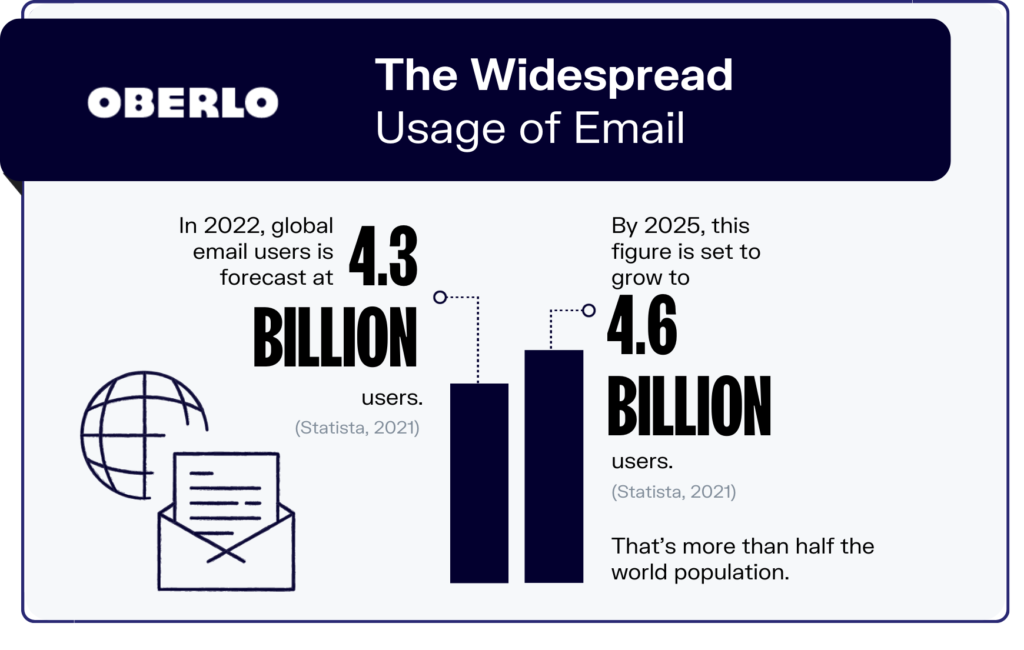
2.2. Not Bothered by Cookie Crumbs:
Unlike some other marketing tricks, emails don’t rely on those disappearing cookies.
They’re like the steady friend who doesn’t need fancy gadgets to find you.
Even with the cookie decline, your inbox remains a reliable place for businesses to connect with you. It’s like having a chat with a friend who knows exactly what you like, without being too snoopy.
2.3. Direct Connection, No Middleman:
Think of emails as your direct line to the good stuff. No middleman, and no weird tracking. It’s a space where businesses can talk to you personally, and you can decide what’s interesting.
In the upcoming section, we’ll dive into why emails are still a powerhouse in this changing digital world and how businesses are using them to create direct and meaningful connections.
Before that, learn how you can connect with your customers through emails effectively with us.
3. Challenges and Opportunities:
Alright, let’s roll up our sleeves and look at the challenges and cool opportunities that come with the post-cookie era in the email marketing world.
3.1. Facing Challenges Head-On:
So, with cookies taking a bit of a backseat, email marketers have some puzzles to solve.
One challenge is figuring out what you might like without the usual tracking tools.
It’s a bit like cooking without your favorite recipe – tricky but doable. Many marketers find this a bit of a head-scratcher.
3.2. Adapting for Success:
But hey, challenges always bring out the creative side!
This is where the opportunities shine. Smart email marketers are using this change as a chance to be more creative and personal.
They’re crafting emails that feel like a conversation, not just a sales pitch. Imagine getting an email that feels like it’s tailored just for you – it’s happening!
Stats show that 71% of consumers are more likely to read a mail from a brand if it has a personalized subject line.
3.3. Innovative Strategies in the Spotlight:
In this changing landscape, innovative email strategies are stealing the show.
From crafting engaging content to finding new ways to understand what you like, email marketers are stepping up their game.
In the upcoming sections, we will explore the new technologies marketers use to achieve this feat.
4. Adapting to a Cookieless World:
Time to put on our adaptability hats!
As cookies take a bit of a back seat, let’s see how email marketers are getting creative and finding new paths in this cookieless world.
4.1 Getting Practical with Strategies:
So, how are email marketers tackling this cookieless challenge? They’re getting practical. Instead of relying on the usual tracking tools, they’re diving into different strategies.
Imagine a chef trying new ingredients when the usual ones run out – that’s the spirit!
This shift is pushing marketers to explore new and exciting ways to understand what you enjoy.
4.2 The Power of First-Party Data:
Enter the hero of the story – first-party data! This is like getting recommendations from a friend who knows you well.
Email marketers are tapping into the information you willingly share, making the content they send you more relevant.
This shift toward first-party data is becoming a game-changer.
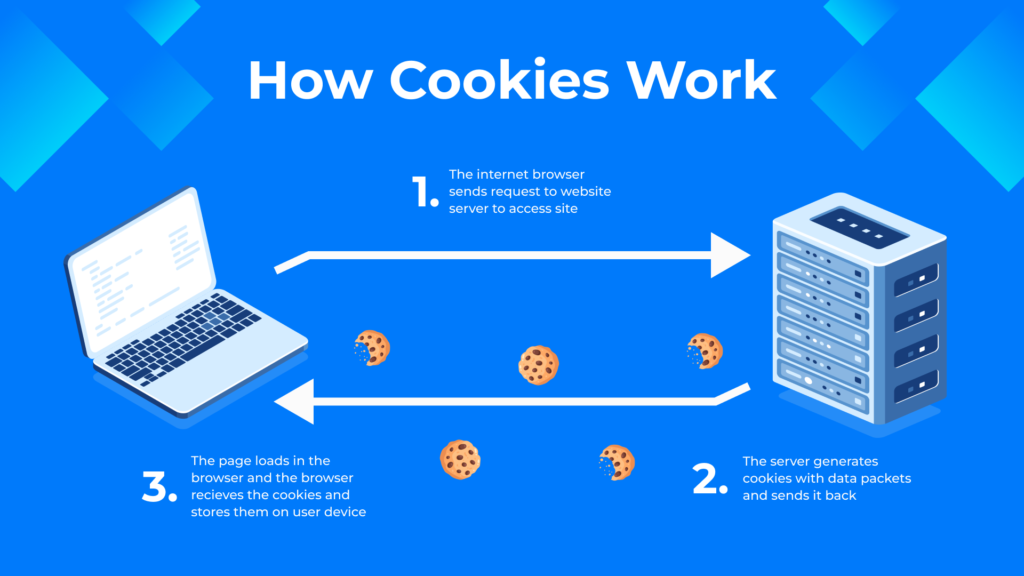
4.3. Consent-Based Marketing:
Ever get annoyed by those pesky ads that seem to know too much? Well, email marketers are all about respecting your space.
Consent-based marketing is the name of the game.
They’re asking for your permission before sending anything your way. It’s like being part of a club where you decide who gets an invite.
This approach is not only respectful but also more appreciated by you, the audience.
In the upcoming section, we’ll uncover how email marketers are adapting and thriving in this cookieless adventure.
5. Personalization Without Cookies:
Okay, let’s talk about adding a personal touch without the usual cookie crumbs. It’s like creating a personalized playlist without knowing all your favorite songs. How do email marketers pull off this personalized magic in the absence of third-party cookies?
5.1. Data Segmentation Unleashed:
Picture this: a library where books are neatly organized by genre. Data segmentation is a bit like that. Email marketers are breaking down information into groups, making sure they send you stuff that matches your interests. This method is not just efficient; it’s becoming a secret ingredient in the recipe for personalized emails.
5.2. Understanding You Better:
Now, how do they know what you like without peeking at your online footprints? Enter user behavior analysis!
Think of it as detective work but without the magnifying glass.
Email marketers are studying how you interact with their emails, the stuff you click on, and what you ignore.
It’s like learning the dance moves you enjoy on the digital dance floor.
Studies suggest that this approach is helping marketers create content that feels tailor-made just for you.
5.3. The Art of Personalization:
Email marketers are turning into digital artists, crafting personalized experiences without relying on cookies.
From suggesting products you might actually love to tailoring content that suits your preferences, they’re taking personalization to a whole new level.
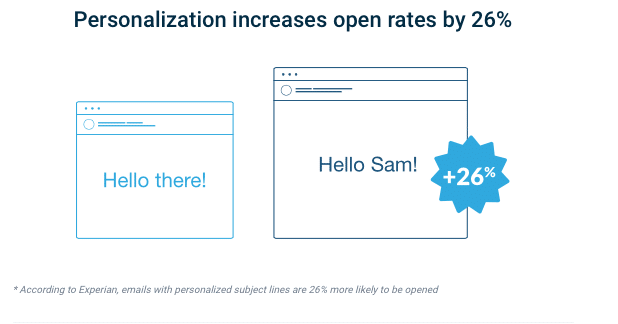
Trust plays an important role when using consumer data for personalization. In the upcoming section, we will uncover the secrets behind this art.
6. Building Trust Through Transparency:
Now, let’s talk about a key ingredient in any healthy relationship – trust. In the digital world, trust is like the secret sauce that makes everything better. How do email marketers build trust, especially in a time when privacy concerns are in the spotlight?
6.1. The Trust Factor:
Trust is earned, not given.
Email marketers are putting on their trustworthy hats and being crystal clear about how they use your data.
It’s like having a friend who tells you exactly what they’re up to. Stats show that people appreciate this honesty and are more likely to engage with brands that are open about their practices.
6.2. Why Transparency Matters:
Imagine receiving an email and knowing exactly why you’re getting it and how your data is being used. That’s transparency in action!
Email marketers are realizing that being upfront about data usage isn’t just a legal checkbox; it’s a way to build a strong connection with you.
Studies indicate that users are more likely to stay engaged when they know what’s happening behind the scenes.
Win-Win for Everyone: Transparent communication creates a win-win situation. You get to decide what you’re comfortable with, and businesses get to understand your preferences better.
It’s like a two-way street where everyone knows the rules.
Now, let us dive into the latest tech innovations in email marketing.
7. Emerging Technologies in Email Marketing:
Get ready to step into the future of email marketing! As cookies take a step back, technology is stepping up to keep the magic alive.
Let’s explore the cool innovations that are making email marketing even more powerful.
7.1 AI: The Email Assistant:
Meet your new email assistant – Artificial Intelligence (AI). It’s like having a super-smart friend who understands your preferences.
AI is helping email marketers analyze data, predict what you might like, and even suggest the best time to send you an email.
Read More : The Impact of Artificial Intelligence on Email Marketing Campaigns
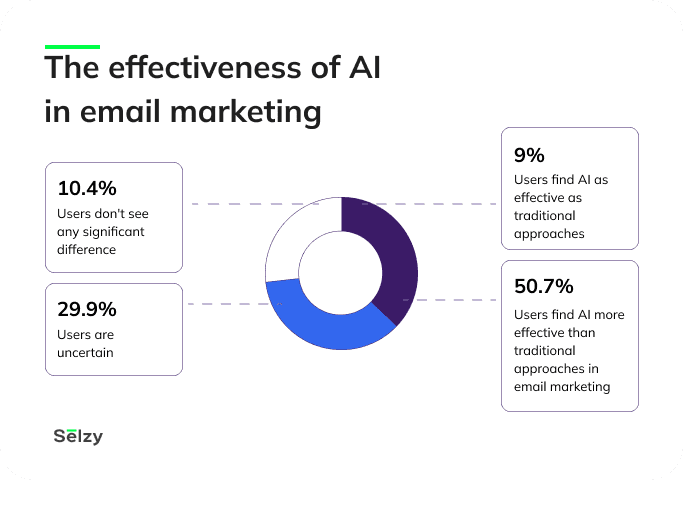
7.2. Machine Learning’s Crystal Ball:
Ever feel like your favorite streaming service just knows what movie you’re in the mood for?
That’s machine learning at work.
Email marketers are using machine learning to predict your interests based on past behavior.
It’s like having a crystal ball that shows what you’ll love next.
The crystal ball approach is improving the content you receive in your inbox.
7.3. Dynamic Content: Changing with You:
Imagine opening an email, and the content inside changes based on what you like.
That’s dynamic content for you!
Email marketers are using this tech magic to adapt the content in real time, ensuring you always get the most relevant information. It’s like a personalized newsletter made just for you.
Trends suggest that users are engaging more with dynamic content.
With all the tech magic going on it is easy to forget where your boundaries lie and that’s where ethics and legalities come in.
8. Legal and Ethical Considerations:
Now, let’s put on our ethical hats and talk about the rules of the game in the world of email marketing. It’s not just about sending cool content; it’s about doing it the right way. So, what are the dos and don’ts when it comes to legal and ethical considerations?
8.1. Respecting Privacy:
First things first – your privacy matters. Email marketers are like good neighbors; they respect your space. Laws like GDPR (General Data Protection Regulation) and CCPA (California Consumer Privacy Act) are the superheroes here. They ensure that your personal information is handled with care.
8.2. The GDPR Dance:
Let’s talk about GDPR. It’s a set of rules designed to give you more control over your personal data.
Email marketers are doing the GDPR dance, making sure they have your permission before sending you anything. It’s like being invited to a party – you decide if you want to join.
8.3. CCPA’s Watchful Eye:
Now, imagine a guardian watching over your data in California – that’s CCPA. It gives you more control over how your data is used.
Email marketers working with a global audience are taking extra steps to comply with CCPA, showing that your data is in good hands.
Trends reveal that this careful approach is becoming a standard practice.
8.4. Being Ethical Champions:
Email marketers aren’t just rule followers; they’re ethical champions. They’re making sure you know what you’re signing up for, and they’re transparent about how your data is used.
Now, let’s explore what the future holds for email marketing.
9. The Future Landscape of Email Marketing:
Stay with me a bit longer as we are going to catch a glimpse of what the future holds for email marketing. As digital marketing continues to evolve, how will email marketing shape up in the days to come?
9.1. Interactive Content and Beyond:
Get ready for emails that aren’t just read but experienced. Interactive content is on the horizon, turning your inbox into an engaging playground. Imagine quizzes, polls, and more right in your emails. Users are showing increased interest in interactive content.
9.2. Augmented Reality (AR) in Your Inbox:
AR isn’t just for gaming; it’s stepping into the world of emails. Picture trying out products virtually or experiencing a sneak peek of a new collection before it hits the stores – all within your email. Email marketers are exploring how AR can bring a touch of magic to your inbox. Trends show that AR might become a game-changer.
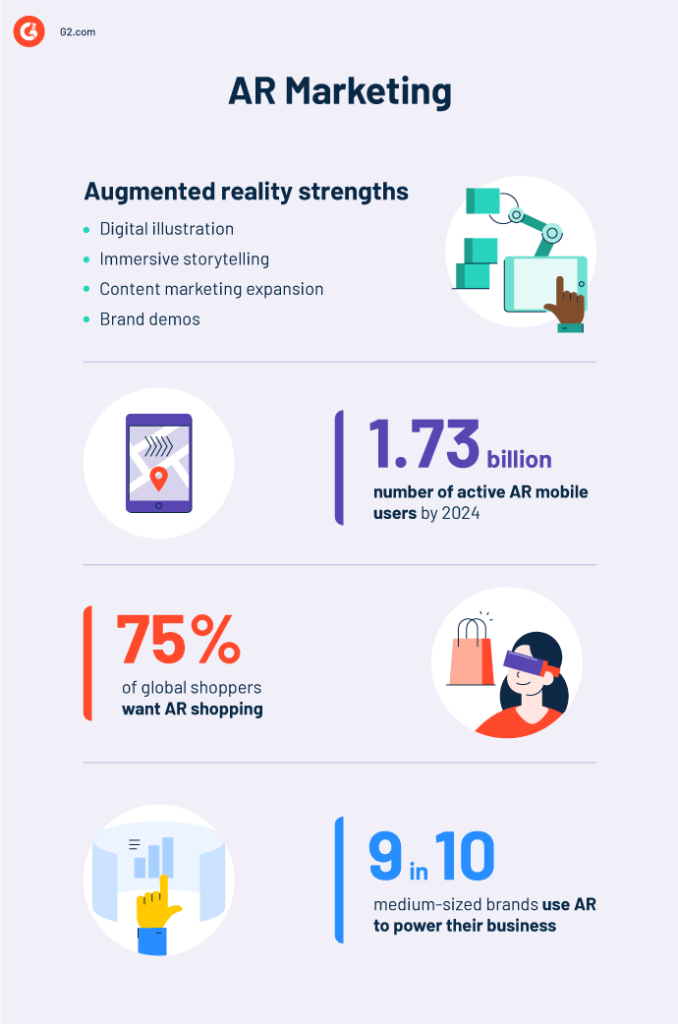
9.3. Smart Segmentation and Predictive Analytics:
The future holds even smarter data segmentation and predictive analytics. Your favorite brands will know you so well that every email feels like it was crafted just for you. It’s like having a personal shopper in your inbox.
9.4. Adaptability as a Constant:
One thing’s for sure – adaptability will remain the name of the game. As technology evolves, so will email marketing strategies. From new regulations to emerging tech, the industry will continue to dance with change.
FAQs
1. Why are digital marketers avoiding cookie tracking these days ?
Due to regulatory restrictions and privacy concerns, digital marketers are hesitant to employ cookie monitoring. The anti-tracking capabilities of web browsers block the power of cookie. Besides more stringent regulations such as the CCPA and GDPR make user consent and data protection mandatory. To effectively navigate this evolving environment, marketers are currently adopting alternative strategies like contextual targeting.
2. Why is email marketing superior to cookie tracking methods for engaging audiences?
Email marketing outperforms cookie tracking due to privacy rules that restrict the use of cookies. Browsers with anti-tracking settings, such as Firefox and Safari, can now run anti-cookie software. Because of the lack of cookies, email marketing outperforms other kinds of advertising.
3. How is email marketing superior to cookie tracking methods in the newly emerging strategies for digital marketing?
Email marketers are breaking down information into groups, making sure they send you information that matches your interests.
This allows emails to deliver content that is personalized for the readers.
The result is enhanced relevance and engagement. Segmentation works by boosting click-through rates and improving overall campaign effectiveness by delivering tailored emails.
It’s notable that these emails go to specific audience segments only. This method is not just efficient; it’s becoming a secret ingredient in the recipe for personalized emails.
4. Is AI the improving the future prospects of email marketing ?
AI in email marketing has automated multiple tasks and has many enhanced functions of email marketing. For example, functions like content personalization and subject line optimization have seen a major progress with AI. It has even improved “send-times” of emails. Besides, AI is getting better at analysis of data, which can be used to predict user behavior. It can quickly segment audiences, and recommend strategies for better engagement. Overall, AI-driven insights enable marketers to deliver more relevant and timely messages, ultimately enhancing campaign performance and ROI.
Related Posts
The Impact of Artificial Intelligence on Email Marketing Campaigns
The Best Practices To Grow An Email List
How To Create An Effective Email Marketing Sequence
Top 5 Email Marketing Performance Indicators to Monitor
Conclusion
And there you have it – a journey through “Email Marketing in a Post-Cookie World.”
As we look to the future, expect more exciting developments in email marketing. Interactive content, augmented reality, and even smarter personalization are on the horizon.
The key is to stay open to change, embrace innovation, and remember that your inbox is evolving to bring you more meaningful and engaging experiences.
What are your thoughts on the future of email marketing?
How do you see it evolving in the post-cookie era? Share your insights, and let’s continue this conversation.
Email marketing isn’t just about messages; it’s about building connections in a digital world that’s always changing.

